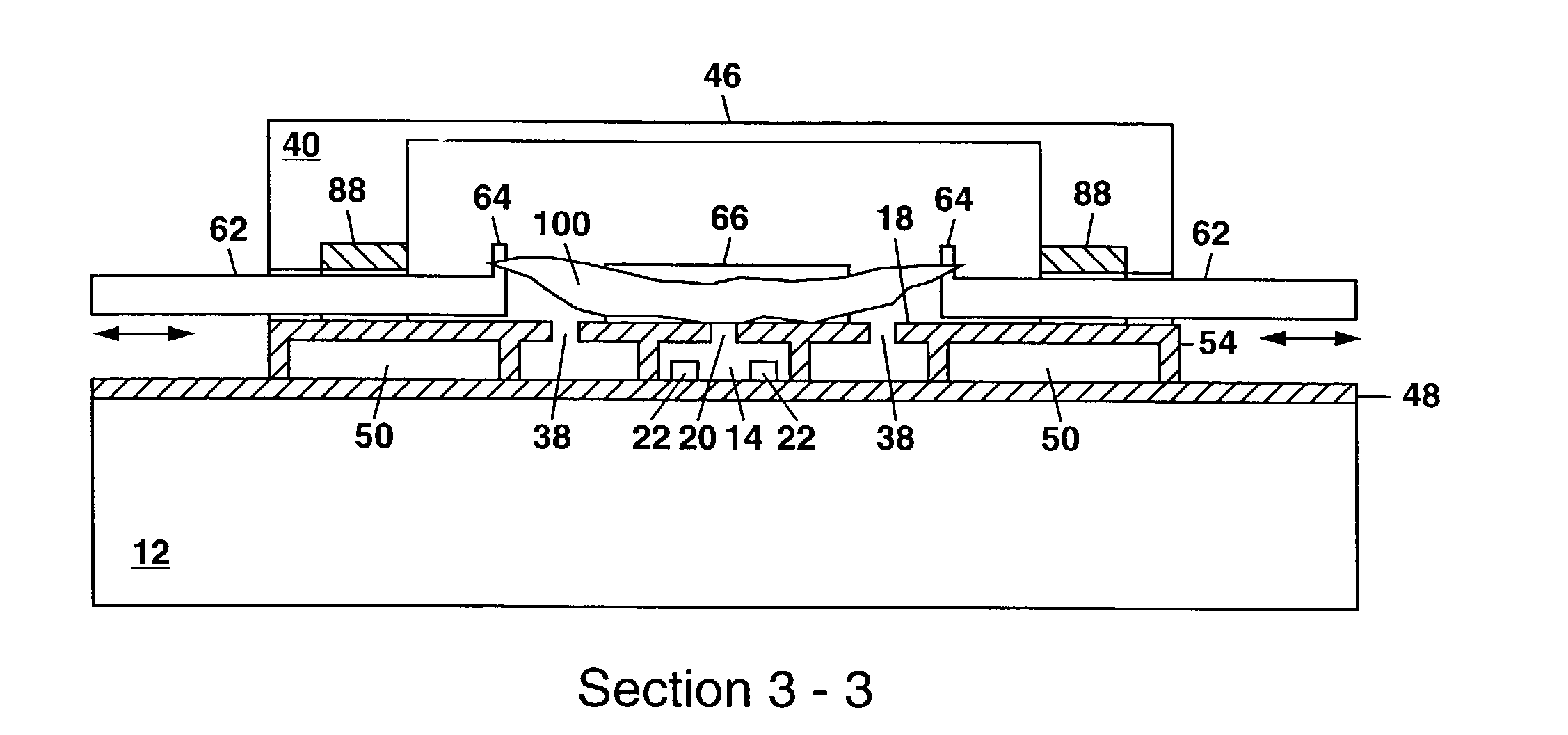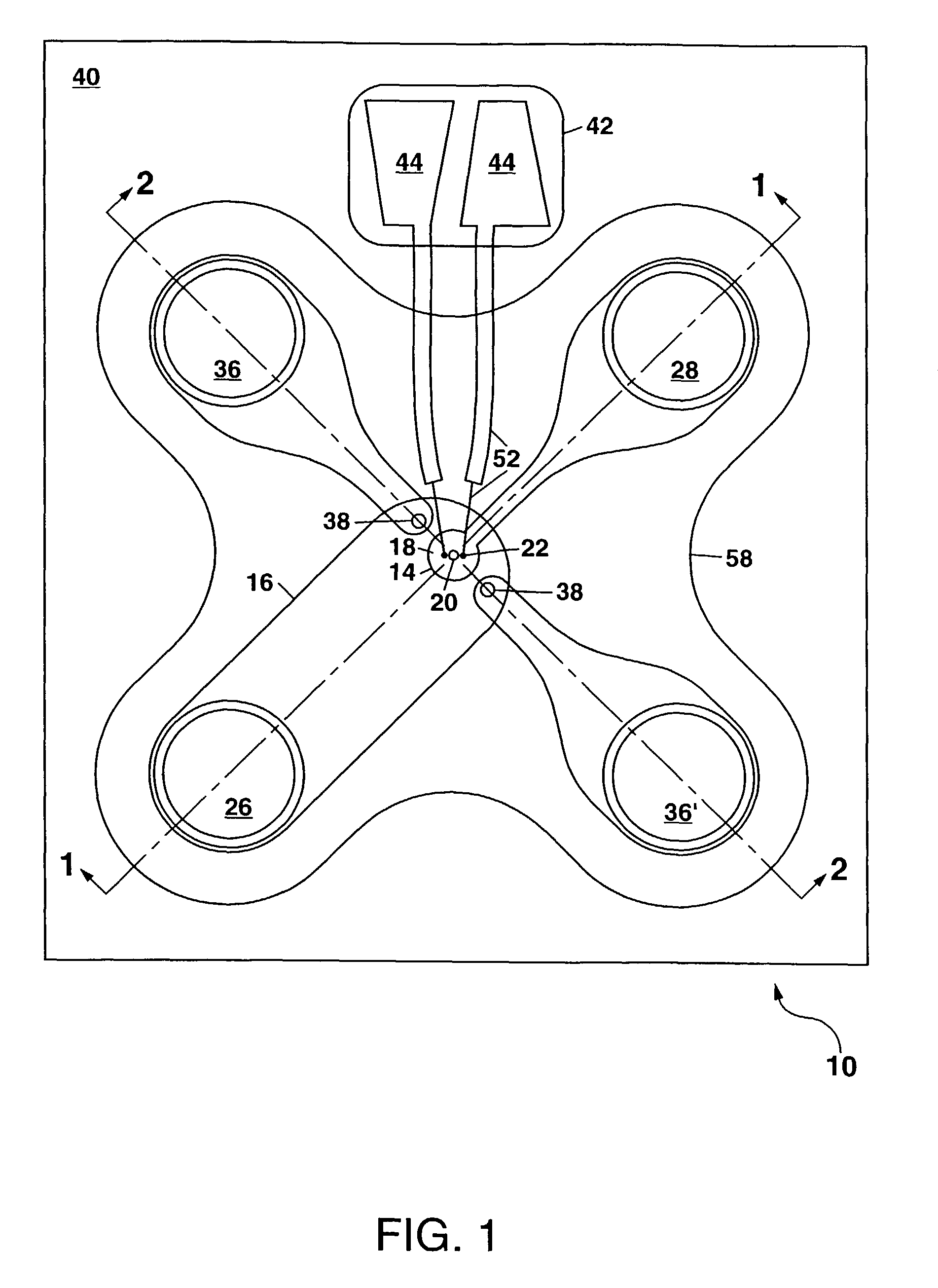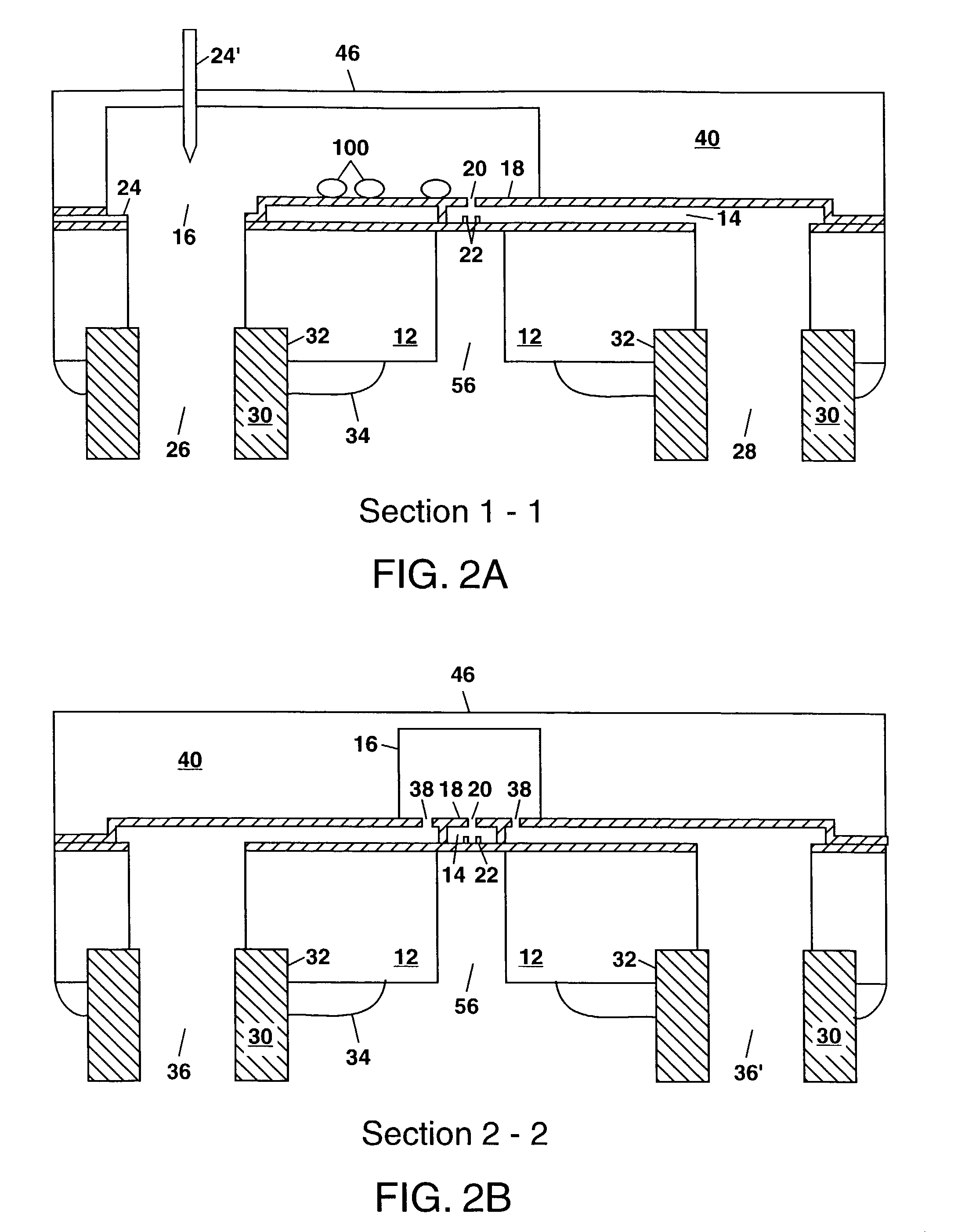Micromachined patch-clamp apparatus
a micromachined and patch-clamp technology, applied in the field of micromachined apparatus, can solve the problem of tedious conventional use of patch-clamp techniqu
- Summary
- Abstract
- Description
- Claims
- Application Information
AI Technical Summary
Problems solved by technology
Method used
Image
Examples
first embodiment
[0025]FIGS. 1 and 2A, 2B schematically illustrate in plan view and cross-section views, respectively, the patch-clamp apparatus 10 of the present invention. The apparatus 10 in FIGS. 1 and 2A, 2b comprises a silicon substrate 12, with a pair of fluid chambers being formed above the substrate 12, including a lower chamber 14 and an upper chamber 16 separated by a common wall 18 which preferably comprises silicon nitride and which is oriented parallel to the plane of the substrate 12. The common wall 18 includes an opening 20 between the lower and upper chambers, 14 and 16, with the opening 20 being smaller than the cells 100 being analyzed. Generally, the opening 20 is micron-sized (e.g. 1-10 μm across).
[0026]The opening 20 is used to localize the cell membrane and to provide a high-resistance seal to the cell 100 so that electrical connections can be made to measure minute (nanoampere to picoampere) electrical currents that flow through the cell membrane (i.e. through ion channels t...
third embodiment
[0050]FIG. 6 shows a schematic plan view of the micromachined patch-clamp apparatus 10 of the present invention. In FIG. 6, the molded polymer material 40 has been omitted for clarity although this material 40 is shown in the cross section view of FIG. 7 along the section line 3-3 in FIG. 6.
[0051]The apparatus 10 in FIG. 6 includes a plurality of additional layers of deposited and patterned polysilicon that are used to form one or more electrostatic actuators 60 on the substrate 12. The electrostatic actuators 60 can be operatively connected to a biological cell 100 (e.g. an elongate muscle cell) to provide mechanical stimulation to the cell 100 during analysis with the patch-clamp technique. Each electrostatic actuator 60 can be mechanically coupled through a linkage 62 formed from the additional polysilicon layers, with the linkage 62 being terminated by one or more attachment points 64 (e.g. in the form of upward-extending posts) that can be used to form an attachment to a biolog...
PUM
| Property | Measurement | Unit |
|---|---|---|
| size | aaaaa | aaaaa |
| size | aaaaa | aaaaa |
| size | aaaaa | aaaaa |
Abstract
Description
Claims
Application Information
 Login to View More
Login to View More - R&D
- Intellectual Property
- Life Sciences
- Materials
- Tech Scout
- Unparalleled Data Quality
- Higher Quality Content
- 60% Fewer Hallucinations
Browse by: Latest US Patents, China's latest patents, Technical Efficacy Thesaurus, Application Domain, Technology Topic, Popular Technical Reports.
© 2025 PatSnap. All rights reserved.Legal|Privacy policy|Modern Slavery Act Transparency Statement|Sitemap|About US| Contact US: help@patsnap.com



